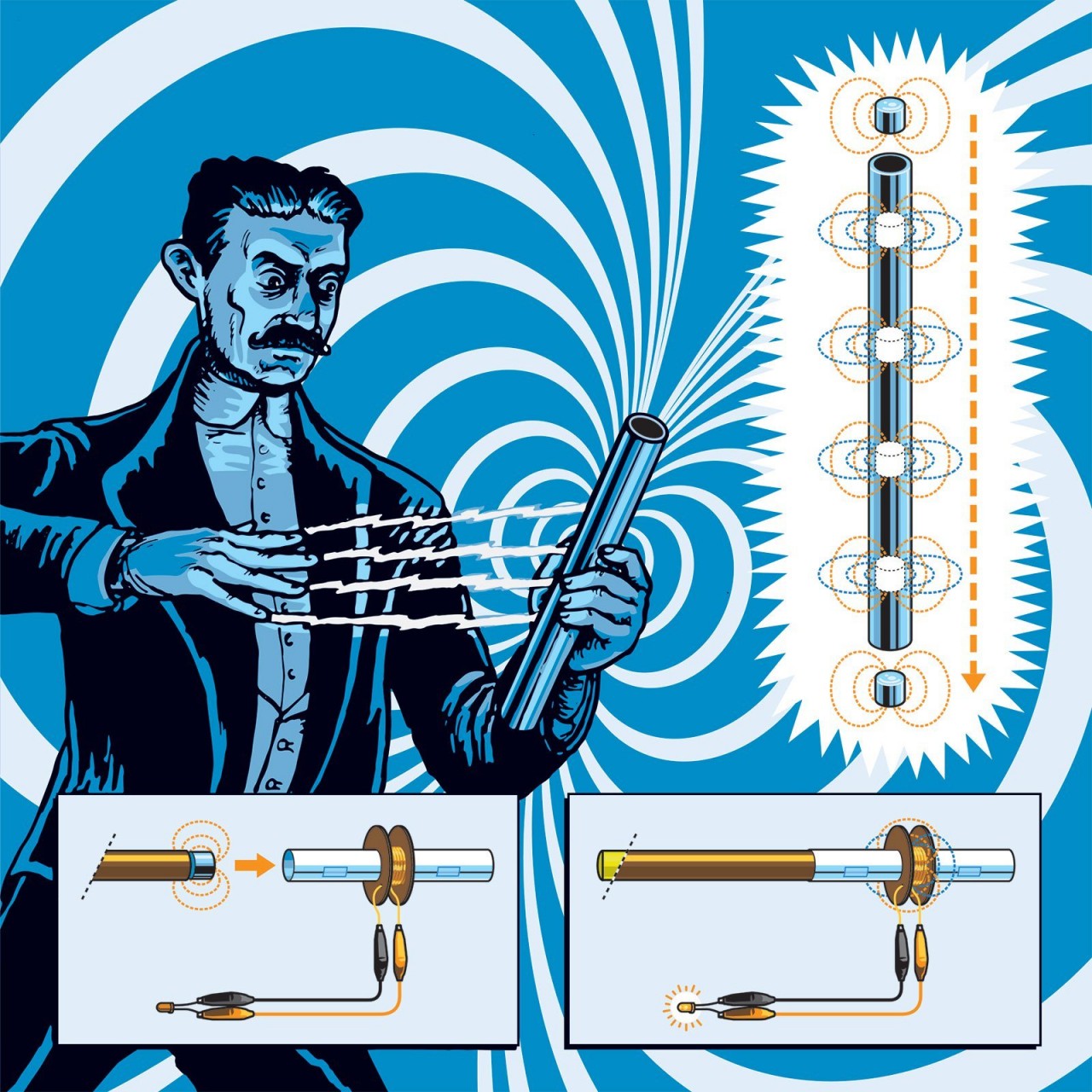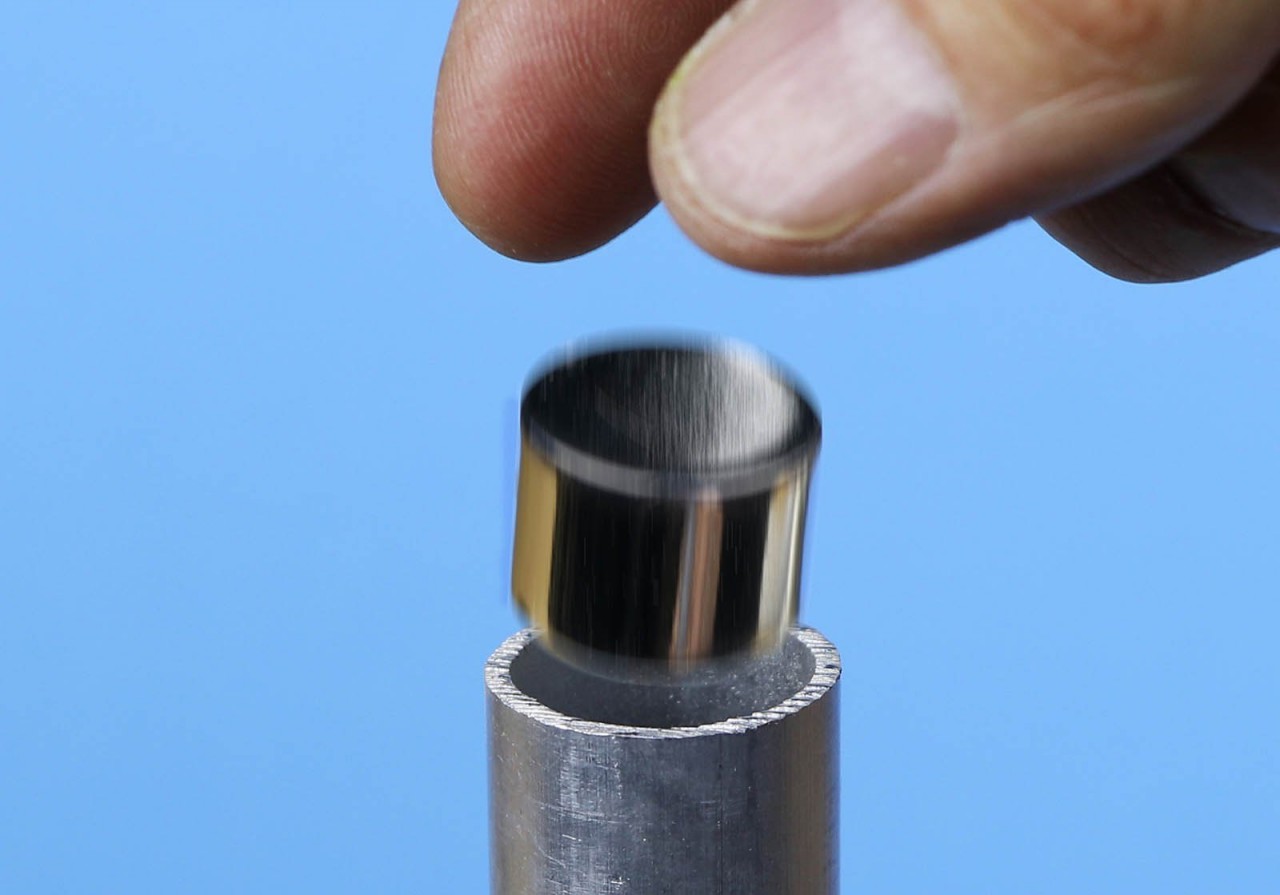
In one hand, you hold an aluminum tube 12″ long. In your other hand, you have a small, polished metal cylinder. You drop the cylinder into the tube (Figure A), and — it disappears.

Where did it go? Nowhere!
It’s inside the tube, but instead of falling freely, it’s moving slowly. After 5 seconds, it finally emerges at the bottom. It has just defied the force of gravity (partially, at least).
Equipment
To see this yourself, you’ll need a cylindrical neodymium magnet measuring ½” high and 11/16″ diameter. This is the smallest, cheapest option to generate a good result. I suggest you buy it from KJ Magnetics, which stocks the unusual 11/16″ size. You also need 12″ of round aluminum tubing with ¾” internal diameter (often abbreviated as ID). Many online sources such as Speedy Metals will sell you this for just a couple of dollars.
If you peek into the end of the tube after inserting the magnet, you’ll see it mysteriously drifting down, as if it’s falling through water. Aluminum is not magnetic, so why should this happen? When I demonstrated the phenomenon at the 2017 Maker Faire Bay Area, no one in the audience could figure it out.
Explanation
To explain it, I suggest you make yourself a coil of wire that’s just a fraction larger than the magnet. I described this experiment in my book Make: Electronics, but the version here is quicker and easier to build, and much cheaper, because I figured out a way to use a smaller magnet.
The secret is to wind a coil that’s a tighter fit.Drill a ⅛” guide hole into the center of one end of the dowel, and drive the 1¼” screw into the hole until about ½” remains sticking out, as in Figure B.

Cut your file card to make a rectangle 6″×2⅜” as in Figure C. Fold the trimmed card in half (Figure D) and add tape to one edge (Figure E). Fold the tape over and open the card out as a tube (Figure F), and you should be able to slip it over the dowel (Figure G). If it won’t fit, make another copy that is a fraction wider.

-

Figure D. After cutting the card, fold it in half lengthwise.
-

Figure E. Add Scotch tape along one edge.
-

Figure F. After you fold the tape over, you can open the card to make a tube.
-

Figure G. Slide the dowel into the tube.
Now you need two circles of corrugated cardboard, shown in Figure H. To make each of them, first cut the outer edge, 2″ in diameter, then draw around the end of the dowel in the center of the circle, and cut along that line. Punch a tiny hole in one circle, using a thumbtack or pushpin.

With the dowel inside the tube that you made from the file card, push the circles of cardboard over the tube and glue them ½” apart as in Figure I.
The post Explore Lenz’s Law with Gravity-Defying Magnet Tricks appeared first on FeedBox.